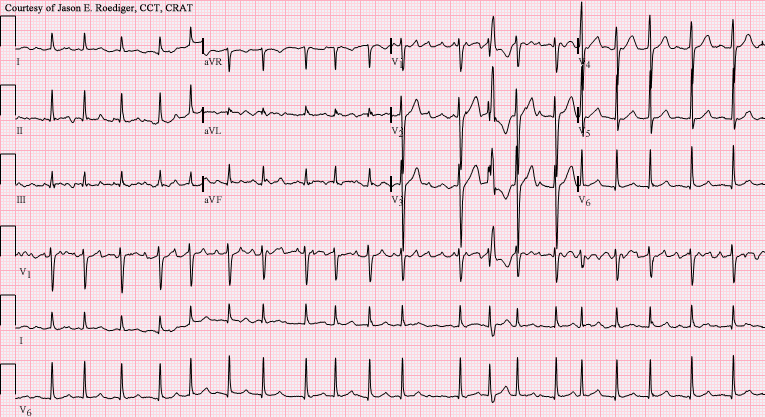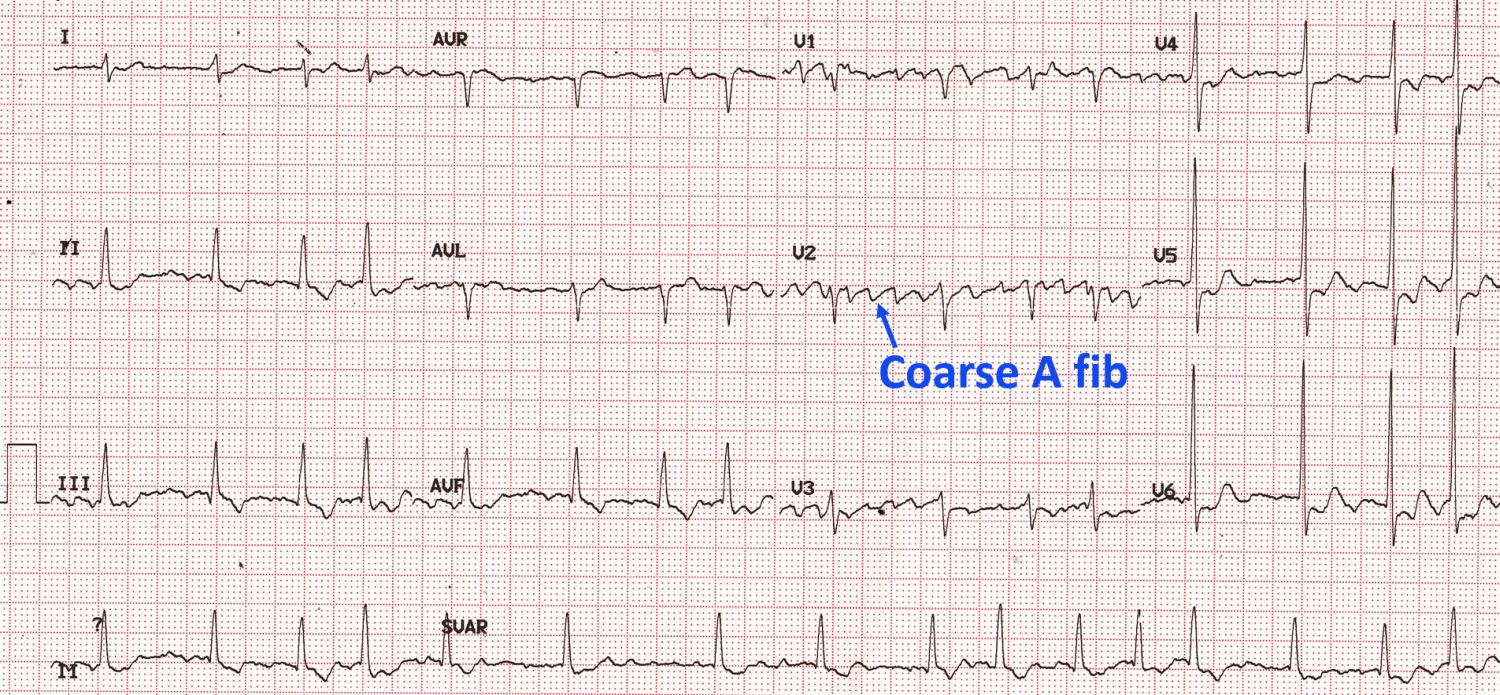

R-waves will be irregular because of the random fibrillary waves quivering at various times.P-waves are not present so you can’t measure if the p-waves are regular.Therefore, you cannot count the atrial rate. The little humps you are seeing are called f-waves (fibrillary waves). In atrial fibrillation, you will always have the following: And QRS complex will measure less than 0.12 seconds.

#Atrial flutter vs afib ecg how to
How many r-waves are present in 6 seconds? This is how to calculate the ventricular rate.Are the r-waves regular? Again, you will use calipers or a sheet of paper to measure the distance between each r-wave to see if they are regular.Are the p-waves regular? This is where you will measure the distance between each p-wave with calipers or a sheet of paper.Are p-waves present? If so, how many p-waves are present in 6 seconds? (when you count the p-waves you are calculating the atrial rate) Normal atrial rates are 60-100 beats per minute.This is because every dysrhythmia has a certain “hallmark” that sets it apart from the other rhythms. If you answer each of these questions and apply it to the “hallmarks” of all the rhythms, you should not have any problem identifying rhythms. When analyzing any type of heart rhythm I recommend following the 5 steps below. Video Tutorial on EKG Rhythmsĥ Easy Steps to Always Follow When Analyzing Rhythms Here is a video tutorial on how to learn the PQRST wave. After you read this article and watch the video tutorial, don’t forget to take the EKG quiz to test how well you grasp this material.īefore you start reading this article, you may want to refresh your memory on the PQRST wave of the EKG, because in order to understand this material you must be familiar with what p-waves and r-waves are. However, I have identified a few steps you can take to help you avoid getting these heart rhythms confused. In addition, they sometimes get those rhythms confused with normal sinus rhythm. Many times when students are learning EKG rhythms, they get confused on atrial fibrillation and atrial flutter.


 0 kommentar(er)
0 kommentar(er)
